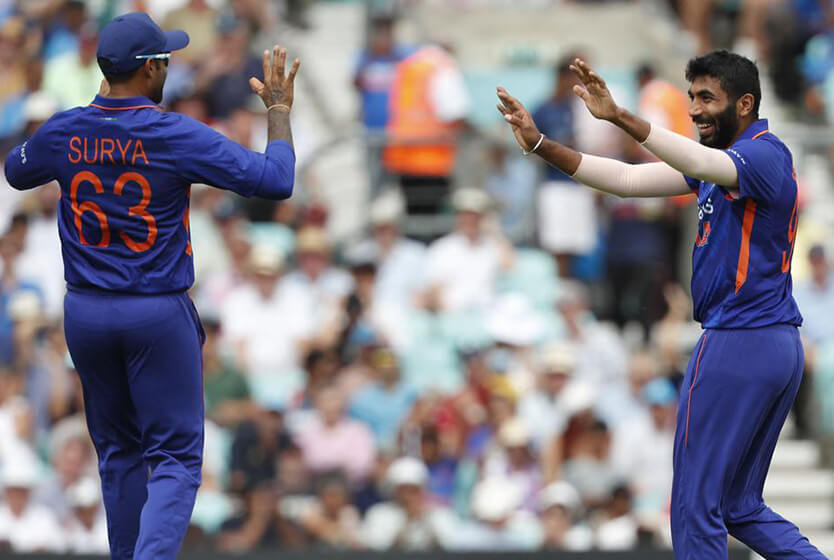
Are Pakistan Using Haider Ali Right?
After a fifty on debut, Haider Ali has seemingly struggled in T20Is. But he’s gone from #3 to opening the batting, then #5 and eventually #6. Are Pakistan using him right, though?
When Haider Ali burst into the national consciousness in PSL 2020, he was relatively known to those who avidly follow Pakistan cricket, having participated in the recently concluded Under-19 World Cup and Quaid-e-Azam Trophy. However, not many thought he would adapt to high-level T20 cricket quite so quickly. Most U19 players who make the transition struggle to start with. They usually don’t possess the power nor the intent that makes a top-class T20 player. Recent examples include Saim Ayub and Haider’s Indian counterpart – Yashavi Jaiswal. But Haider was special, and everyone who saw him play knew it.
Twelve months on, he’s been labeled brainless, a “tulla” and equated to thirty-year-olds who don’t even share the same skill set. People love to make comparisons because it’s how our brains are wired. The comparisons are based on snap judgments that fit a person into a box they rarely escape from. When in fact, such a box shouldn’t even exist.
There is no such thing as a “hitter” or a “slogger.” These are reductive all-encompassing words that are past their time. In T20 cricket, in the simplest of terms, there are anchors, spin dominant players, pace dominant players, and dynamic players. The times of making up the bulk of the runs at the death and preserving wickets are over. Teams have realized they relax too much in the middle overs of a T20 innings, but have Pakistan?
Since 2019, Pakistan’s Post-Powerplay phase (Overs 7-11) run rate is the third-worst amongst the Top 8 teams, ahead of only Sri Lanka and a West Indies side without its main players. While they have acknowledged and attempted to fix their Powerplay run rate, no such attempt has been made for Post-PP, even though both of their current openers – Babar and Rizwan – seem to relax in that period.
While the addition of Fakhar Zaman on the back of his ODI performances is a welcome surprise, it remains to be seen whether he will be able to recreate the Post-PP numbers he pumped out when he played as an opener. Nevertheless, playing him is a good move because it introduces a leftie in a right-hander-dominated top order, and he has the ability to go big after getting set.
As of now, Pakistan has Mohammad Hafeez batting at No.4, whose Post-PP SR (129.6) is worse than even that of Babar’s and is on par with the likes of Hussain Talat. It means Pakistan essentially falls behind the game; this has and will cost them matches.
So what does it take to be successful in the Post-PP phase? Well, the main requirements are a wide skill set vs. spin and elite intent. Both are crucial because many good players of spin see the Post-PP phase as a sort of “rest period” to rotate the strike and preserve wickets resulting in them possessing high averages but low SRs.
Haider Ali averages 60 vs. spin at an SR of 160 since 2019; nobody in Pakistan averages more against spin at a greater SR. In the Post-PP phase, he has the second-highest SR among Pakistanis since 2019 (min. 200 balls). The only person with a higher SR is batting above him – Fakhar Zaman.
All these numbers can be explained with a single shot, his second ball in international cricket. Moeen Ali bowled a loopy delivery to the debutant, expecting it to be patted away, perhaps for a leading-edge, but Haider had the INTENT to seize on it and the SKILL to smack it in the stands.
A team’s batting order in T20 cricket should ideally be situational. However, team sheets still need to be submitted, so using data from matches amongst the Top 8 teams since 2016, we can predict the usual requirements for each batting position.
The No.3 enters the game, usually around the 4th over. Thus, he should be adept at negotiating the newish ball versus express pace while also taking advantage of the PP and Post-PP period. Haider initially started as a No.3, but Peshawar Zalmi realized this season that while he has the intent to take advantage of both phases, he is at times vulnerable versus express pace with the new ball. Thus, this truncated PSL season, he only faced six balls in the PP in which he scored 12 runs but was dismissed once by Lahore’s Salman Mirza.
The No.4’s entry point is right at the start of the Post-PP phase, in the 8th over. It is where Haider should ideally be batting, with more than 50% of the overs being bowled by spin and the other 50% by medium-pace all-rounders teams are trying to get overs out of. Haider’s intent and skill will ensure Pakistan does not fall behind the game.
The advantage of a team taking full toll of the Post-PP phase can not be discounted. When a batsman attacks in this phase, it sends chaos through the ranks and frazzles the opposition captain. He can’t keep bowling his spinners, so he will turn to a part-time medium pacer. If that fails, he will be forced to bring back his gun bowler early to pick a wicket and stop the flow of runs. If he is bowling his gun bowler now, a lesser bowler will have to bowl at the death. The entire team is benefiting because there is one madman in the middle order who doesn’t care for relaxing and preserving wickets in the middle overs.
It is precisely what Nicholas Pooran does for every team he plays and has been widely successful. Sure he, like Haider, has his weaknesses against express pace and short balls, but that doesn’t hold him back from playing the same way every game. Team managements back him because they understand his impact on the game and don’t see him as their solution to their death-hitting problems.
No.5s may face an over or two of spin to settle but will eventually have to attack pace, while at No.6, you would be lucky to face a single ball of spin. In his last international game before being dropped, Haider batted at No.6. Such gross mismanagement for the purpose of fitting him into the side shouldn’t be entertained. Play him in the phase/situation/position he is suited to, or don’t play him at all.







Leave a Reply